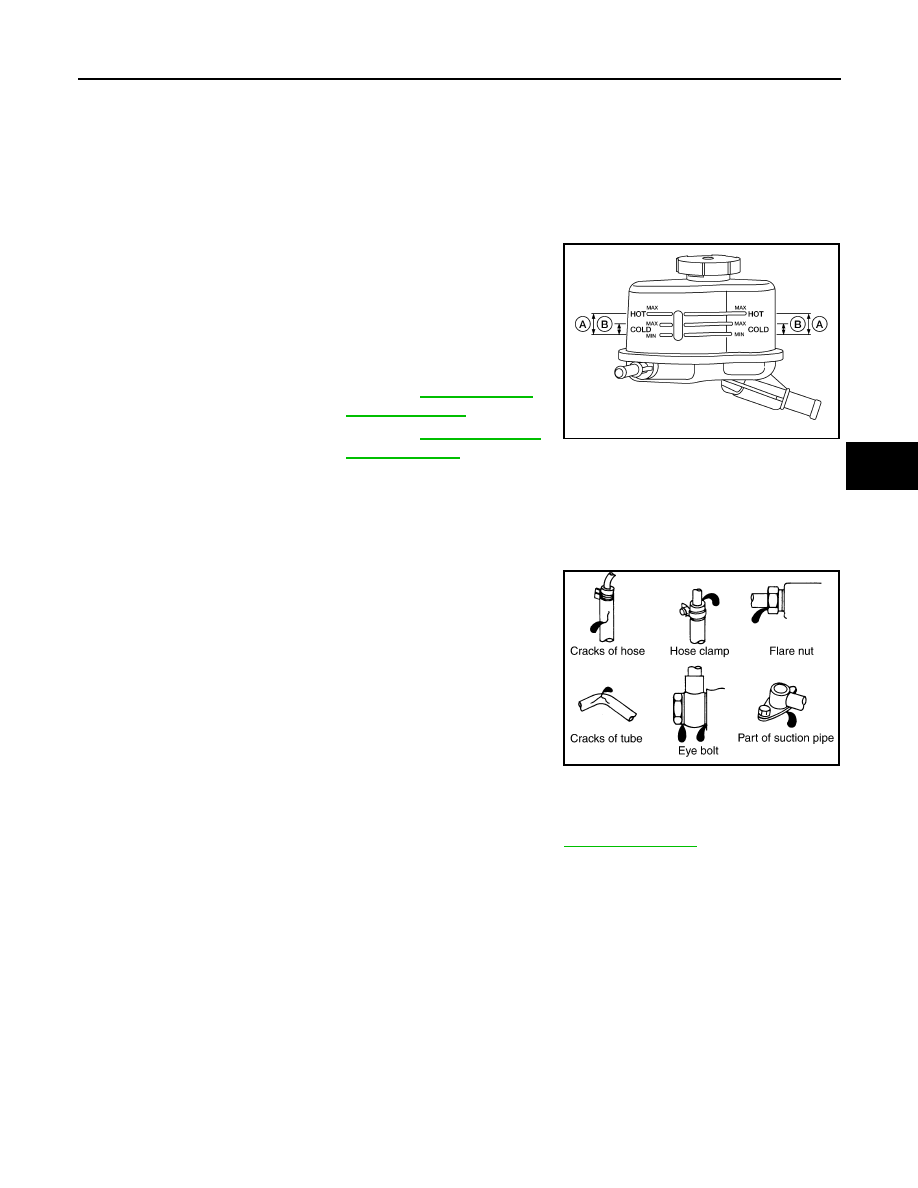Content .. 1098 1099 1100 1101 ..
Nissan Teana J32. Manual - part 1100

POWER STEERING FLUID
ST-7
< ON-VEHICLE MAINTENANCE >
C
D
E
F
H
I
J
K
L
M
A
B
ST
N
O
P
ON-VEHICLE MAINTENANCE
POWER STEERING FLUID
Inspection
INFOID:0000000003826225
FLUID LEVEL
1.
Check fluid level with engine stopped.
2.
Ensure that fluid level is between MIN and MAX.
3.
Fluid levels at HOT and COLD are different. Do not confuse
them.
CAUTION:
• The fluid level should not exceed the MAX line. Excessive fluid causes fluid leakage from the
cap.
• Never reuse drained power steering fluid.
FLUID LEAKAGE
Check hydraulic connections for fluid leakage, cracks, damage,
looseness, or wear.
1.
Run the engine until the fluid temperature reaches 50 to 80
°
C
(122 to 176
°
F) in reservoir tank, and keep engine speed idle.
2.
Turn steering wheel several times from full left stop to full right
stop.
3.
Hold steering wheel at each lock position for five seconds and
carefully check for fluid leakage.
CAUTION:
Never hold the steering wheel in a locked position for more
than 10 seconds. (There is the possibility that power steer-
ing oil pump assembly may be damaged.)
4.
If fluid leakage at connections is noticed, then loosen flare nut and then retighten. Do not overtighten con-
nector as this can damage O-ring, washer and connector.
5.
If fluid leakage from oil pump is noticed, check oil pump. Refer to
.
6.
Check steering gear boots for accumulation of fluid leaked from steering gear.
AIR BLEEDING HYDRAULIC SYSTEM
If air bleeding is not complete, the following symptoms can be observed.
• Bubbles are created in reservoir tank.
• Clicking noise can be heard from oil pump.
• Excessive buzzing in the oil pump.
NOTE:
Fluid noise may occur in the steering gear or oil pump. This does not affect performance or durability of the
system.
1.
Turn steering wheel several times from full left stop to full right stop with engine off.
CAUTION:
Fill reservoir tank with a sufficient amount of fluid so that fluid level is not below the MIN line while
turning steering wheel.
2.
Start the engine and hold steering wheel at each lock position for 3 second at idle to check for fluid leak-
age.
HOT (A)
: Fluid temperature 50 – 80
°
C (122 – 176
°
F)
COLD (B)
: Fluid temperature 0 – 30
°
C (32 – 86
°
F)
Recommended fluid
: Refer to
.
Fluid capacity
: Refer to
.
ALGIA0002GB
SGIA0506E